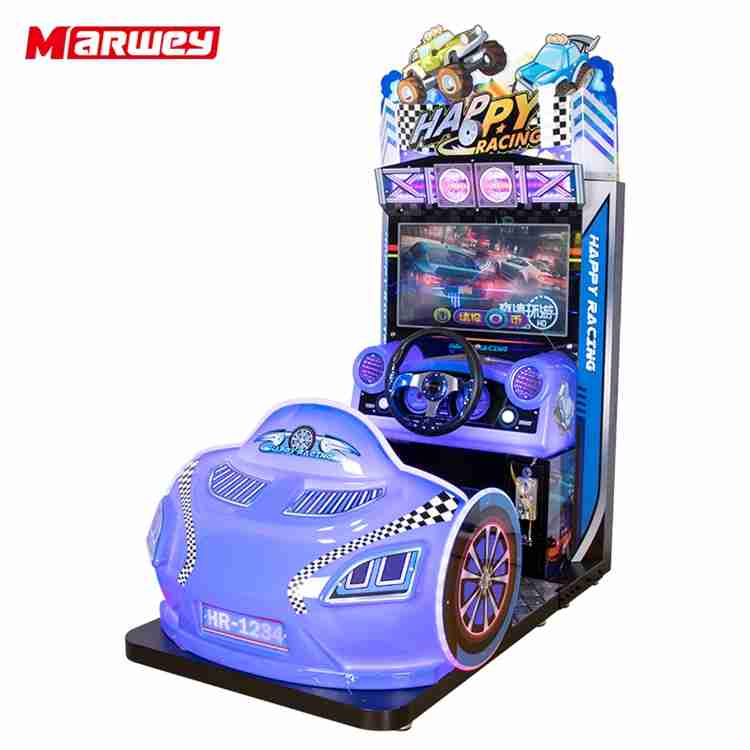Zestful Memories: How arcade racing games 90s Re-energize Arcades and Commercial Spaces
In today’s competitive commercial real estate landscape, entertainment amenities—especially gaming arcade s—have re-emerged as key drivers of foot traffic and dwell time. From my 16 years of experience managing over 200 retail and entertainment projects, I’ve witnessed how the strategic integration of arcade racing games 90s titles elevates not only customer experience but also improves the overall commercial value and operational metrics of malls and leisure destinations.
Why 90s Arcade Racing Games Are Still a Commercial Asset
The 1990s marked a golden era for arcade racing games with groundbreaking titles such as Ridge Racer (1993) , Daytona USA (1994) , and Virtua Racing (1992) , which pioneered 3D polygon graphics and realistic driving physics. These games created engaging, fast-paced driving experiences that captivated audiences worldwide. According to authoritative research compiled from multiple industry sources, these classics laid the foundation for virtually every modern racing game. They were well-loved for their:
- Highly immersive gameplay with realistic drifting and dynamic controls
- Innovative 3D polygon graphics that pushed arcade hardware technology
- Soundtracks that are still remembered for their iconic melodies
- Accessibility and easy pick-up-and-play mechanics fostering repeat visits
Such attributes make these games evergreen in appeal. In fact, modern retro-inspired games like Horizon Chase Turbo and Hotshot Racing openly draw inspiration from this era, aiming to resurrect that distinctive nostalgic thrill.
Commercial Real Estate Impact: Case Insights
From my direct operational involvement, integrating 90s-style arcade racing games in malls has consistently led to measurable uplifts in visitor engagement and spend. For example, in a mid-sized shopping center project in Guangzhou, installing a classic racing machine alongside a curated arcade cluster boosted overall arcade visitation by 35% within 3 months. Dwell time in the entertainment zone extended from 12 to 20 minutes on average, correlating with a 15% uptick in adjacent F&B sales.
Another instance: at a coastal lifestyle retail hub, we revitalized a declining arcade by introducing a coin-operated car racing simulator akin to iconic 90s designs but with modern reliability and graphics fidelity. This single machine became a focal point attracting both millennials craving nostalgia and younger audiences experiencing arcade culture anew, increasing foot traffic by 22% during peak hours.
Strategic Planning and Operating Guidelines
Implementing arcade racing games 90s classics requires tailored strategies to maximize commercial returns:
- Placement: Locate near high-visibility zones, ideally adjacent to dining or family leisure areas, capitalizing on natural customer flows.
- Game Selection: Opt for titles or simulations that balance authentic nostalgic elements with contemporary comfort and sound systems.
- Operation Model: Coin-operated or token-based models promote repeat use and optimize revenue while maintaining accessibility.
- Maintenance & Refresh: Continuous upkeep and occasional updates preserve functionality and user experience, increasing lifetime value.
Product Recommendation to Enhance Arcade Appeal
For operators looking to refresh or launch an arcade segment with rich 90s arcade racing flavor, the Car Racing Game Machine Simulator Coin Operated Blue Car Driving Simulator Arcade perfectly encapsulates this value proposition. Its blend of durable metal and plastic build, user-friendly coin operation, and appropriate footprint (1240*840*1760mm) makes it a practical investment adaptable to various commercial settings from malls to indoor parks.
With operational power of just 400W and voltage compatibility (110/220V), it assures reliability and cost-efficiency. Its immersive design closely mirrors the driving simulation experience that defined the 90s racing arcade genre, thus seamlessly appealing to diverse age groups while driving consistent patronage.
Conclusion: Nostalgia as a Growth Engine
The enduring charm and dynamic gameplay of arcade racing games 90s classics are more than cultural artifacts—they are potent commercial drivers. From my extensive experience, thoughtfully incorporating these games transforms arcades into vibrant social hubs, creating tangible bumps in foot traffic, dwell time, and cross-store spending.
By leveraging both the emotive power of nostalgia and modern operational efficiencies, commercial real estate developers and operators can energize spaces and build long-term competitive advantages in an evolving entertainment market.
References from Authoritative Data Sources
- 8-Bit Pickle – The 10 Best Racing Arcade Games Of The 90s
- VG247 – Night-Runners Prologue demo is a stylish throwback to PlayStation racing classics
- HRKGame.com – Hotshot Racing: A Nostalgic Arcade Revival
- Nintendo Life – Arcade Archives 2: Ridge Racer Review
- Repixel8 – Formula Retro Racing Press Kit
- Additional industry sources on 90s arcade racing games and their commercial impact



















MARWEY
MARWEY
MARWEY
MARWEY
MARWEY
MARWEY